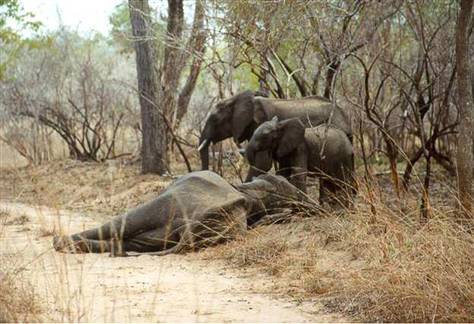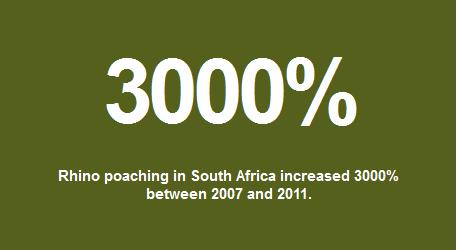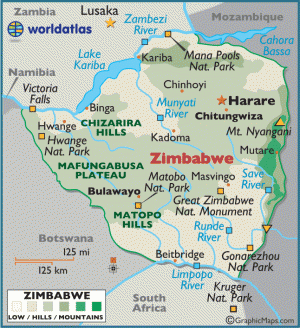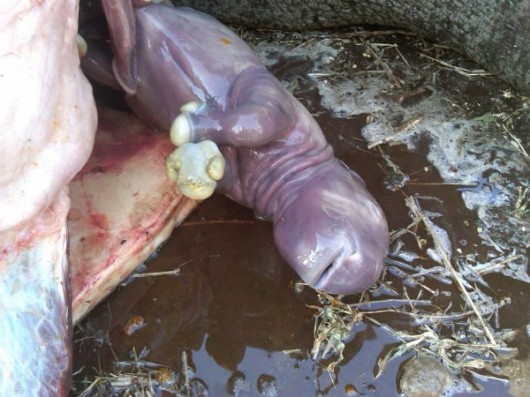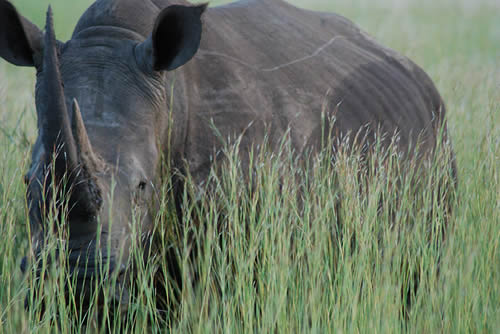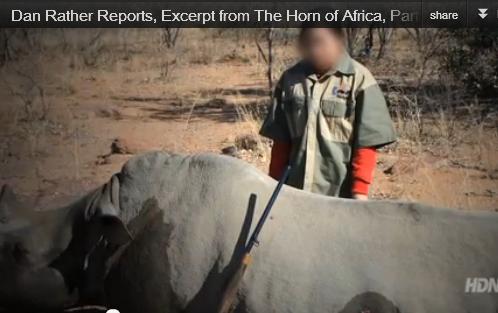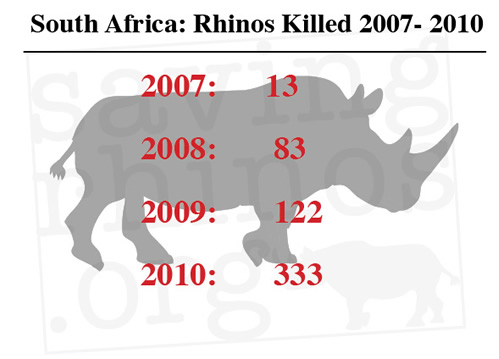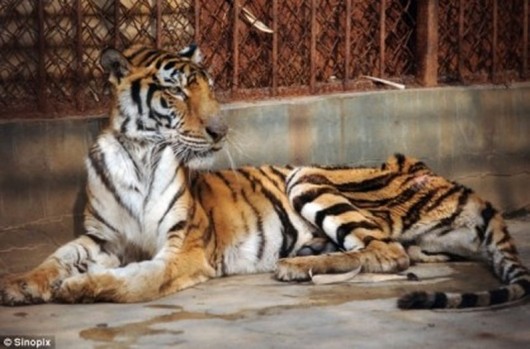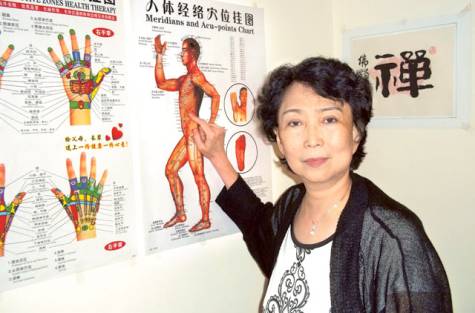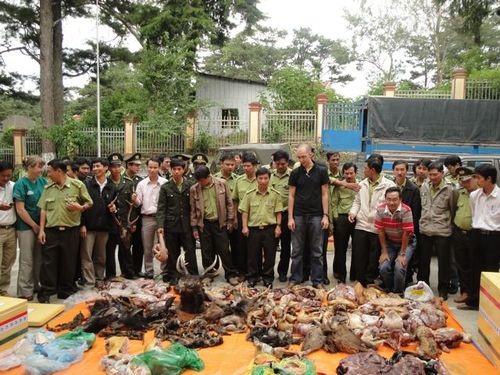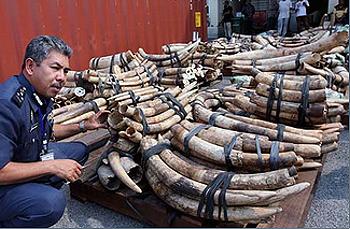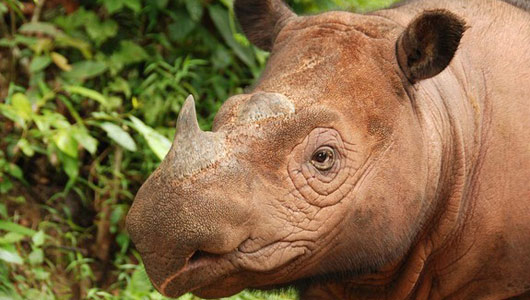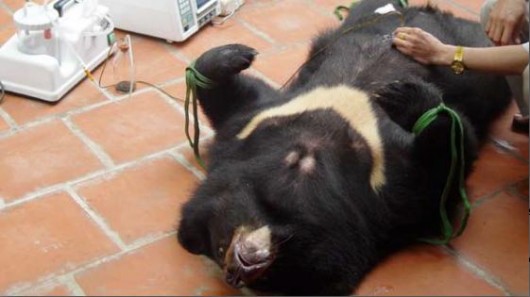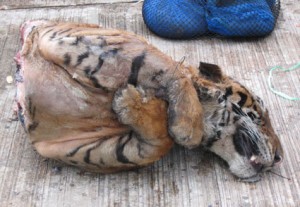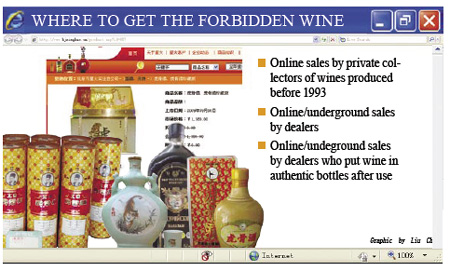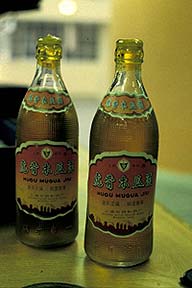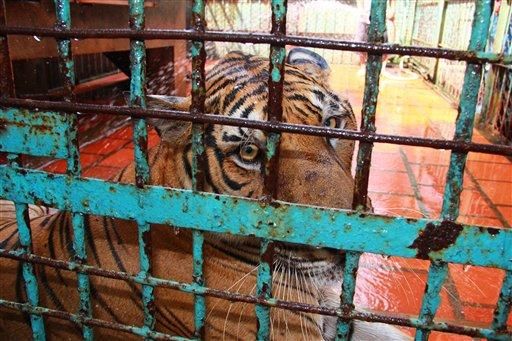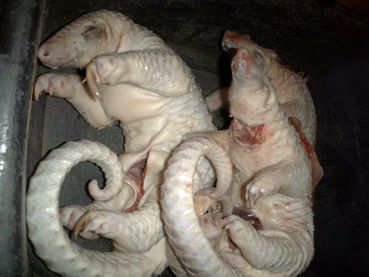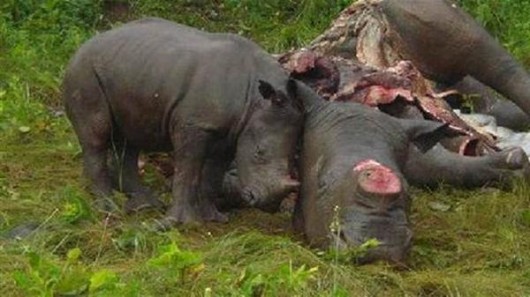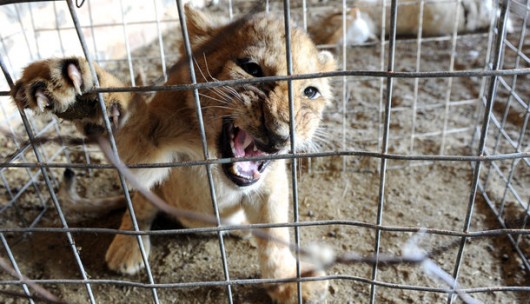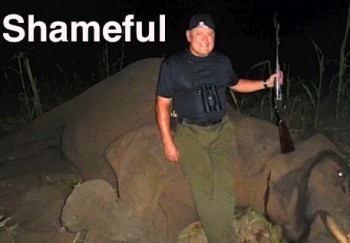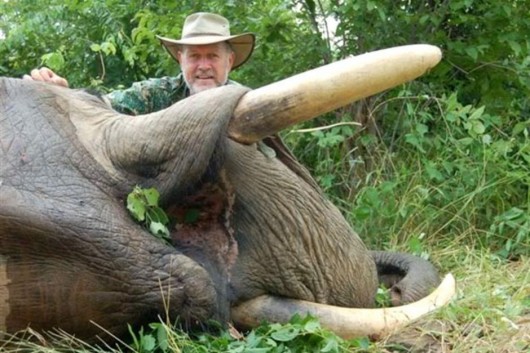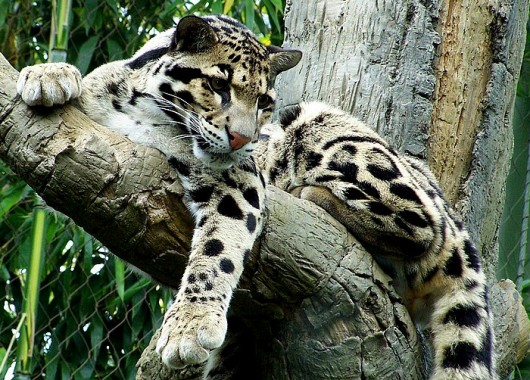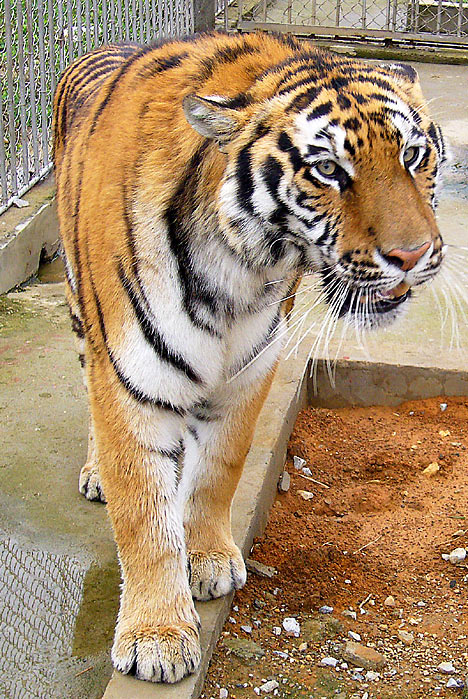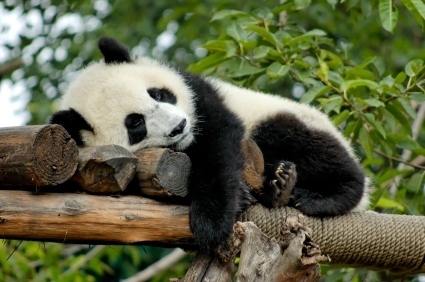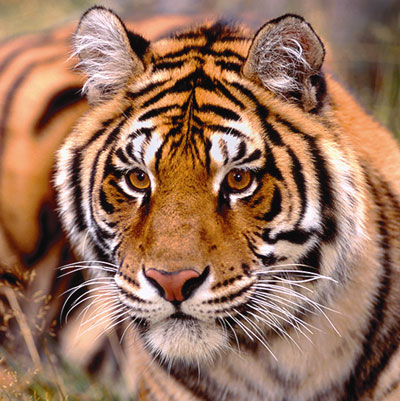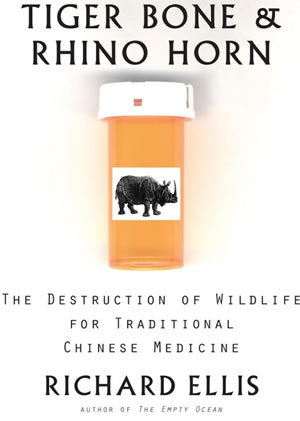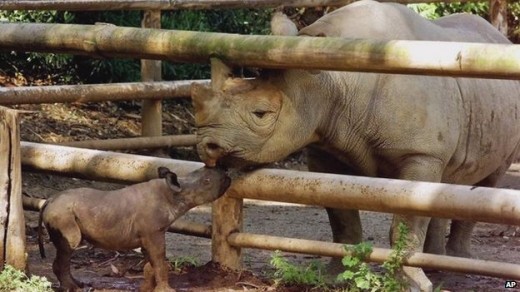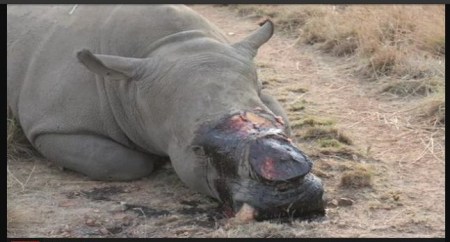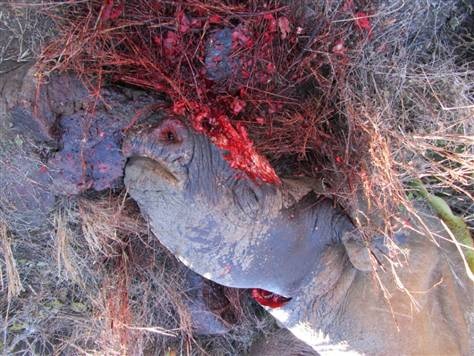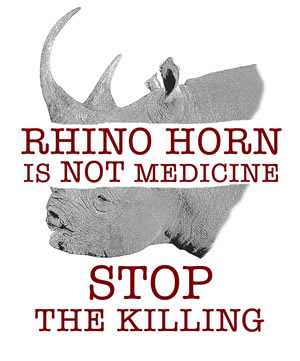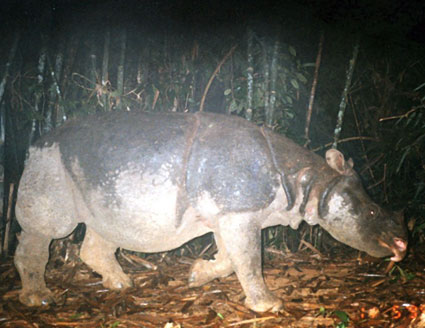This is what 600 dead elephants look like
Wednesday, January 9th, 2013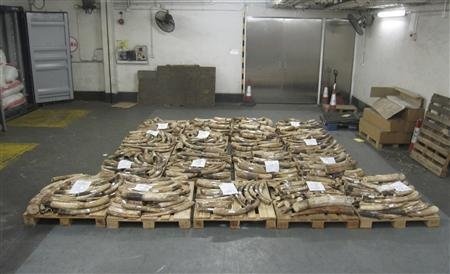 The tusks of 600 elephants seized in Hong Kong in October 2012 (just 3 months ago)
The tusks of 600 elephants seized in Hong Kong in October 2012 (just 3 months ago)Street Value is $3.4M in illegal African ivory destined for Traditional Chinese Medicine [Source: ^http://www.elephantjournal.com/2012/10/the-biggest-haul-of-ivory-tusk-in-hong-kong-customs-enforcement-history-in-a-single-operation/]
.
Illegal Wildlife Trade
[World Wildlife Fund, 2012, ^http://worldwildlife.org/threats/illegal-wildlife-trade].
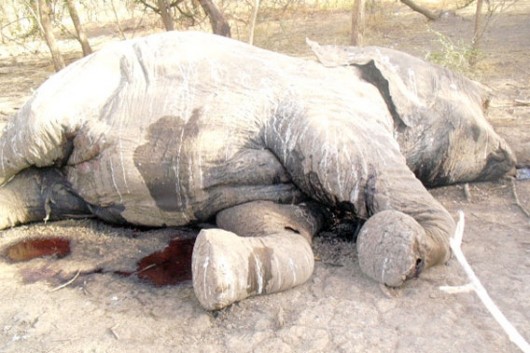 Elephant cruelly butchered for Traditional Chinese ‘Medicine’ (read ‘quackery’)
Elephant cruelly butchered for Traditional Chinese ‘Medicine’ (read ‘quackery’)
.
<<The world is dealing with an unprecedented spike in illegal wildlife trade, threatening to overturn decades of conservation gains. Ivory estimated to weigh more than 23 metric tons—a figure that represents 2,500 elephants—was seized in the 13 largest seizures of illegal ivory in 2011. Poaching threatens the last of our wild tigers that number as few as 3,200.
Wildlife crime is a big business. Run by dangerous international networks, wildlife and animal parts are trafficked much like illegal drugs and arms. By its very nature, it is almost impossible to obtain reliable figures for the value of illegal wildlife trade. Experts at TRAFFIC, the wildlife trade monitoring network, estimate that it runs into hundreds of millions of dollars.
Some examples of illegal wildlife trade are well known, such as poaching of elephants for ivory and tigers for their skins and bones. However, countless other species are similarly overexploited, from marine turtles to timber trees. Not all wildlife trade is illegal. Wild plants and animals from tens of thousands of species are caught or harvested from the wild and then sold legitimately as food, pets, ornamental plants, leather, tourist ornaments and medicine. Wildlife trade escalates into a crisis when an increasing proportion is illegal and unsustainable—directly threatening the survival of many species in the wild.
Stamping out wildlife crime is a priority for WWF because it’s the largest direct threat to the future of many of the world’s most threatened species. It is second only to habitat destruction in overall threats against species survival.>>
.
Traditional Chinese ‘Medicine’ driving wicked Slaughter
.
The demand for elephant ivory is stronger than ever in mainland China and Thailand. Ivory is used in Traditional Chinese Medicine to treat fevers, nosebleeds, convulsions, stroke and as an aphrodisiac.
But TCM doesn’t work. It is quackery and witchcraft. It is immoral because it involves using and prescribing wildlife parts and drives the illegal cruel slaughter of endangered wildlife and its trafficking. TCM is wicked and backward. TCM needs to be internationaly banned just like cannibalism.
 TCM: ‘Timeless Wisdom for a Modern World”?
No, TCM has the same legitimacy as Cannibalism
TCM: ‘Timeless Wisdom for a Modern World”?
No, TCM has the same legitimacy as Cannibalism
.
The following websites link to organisations pushing this TCM trade:
.
Panaxea International, ^http://www.panaxea.com/
Eu Yan Sang ^http://www.euyansang.com/
Sydney Institute of Traditional Chinese Medicine, ^http://www.sitcm.edu.au/
Chinese Medicine Board of Australia (Note: not a government body), ^http://www.chinesemedicineboard.gov.au/
Asante Academy of Chinese Medicine, ^http://asanteacademy.wordpress.com/2010/01/20/treating-cancer-with-chinese-medicine/
.
 Works better than TCM – guaranteed!
Works better than TCM – guaranteed!
.
Oct 2012: Hong Kong seizes $3.4M in illegal African Ivory
[Source: ‘Hong Kong seizes $3.4M in illegal African ivory’, by Associated Press (foreign), 20121020, The Guardian (Britain), ^http://www.guardian.co.uk/world/feedarticle/10492150].
<<Hong Kong customs officers have confiscated nearly 4 tons of ivory worth $3.4 million in their biggest ever seizure of endangered species products, authorities said on Saturday.
Acting on a tip from customs officials in neighboring Guangdong province in mainland China, Hong Kong officials found the ivory tusks and ornaments in two containers shipped from Tanzania and Kenya.
Officers on Tuesday found nearly 1,000 pieces of ivory tusks weighing more than 1,900 kg as well as 1.4 kg of ivory ornaments in a container from Tanzania. The ivory was hidden in bags of plastic scrap.
A day later, officers found 237 pieces of ivory tusks weighing about 1,900 kg in a shipment from Kenya.
Authorities in China have arrested seven people, including one from Hong Kong. The ivory seizure tops one in 2011 worth $2.2 million.
“This is the biggest haul of ivory tusk in Hong Kong customs enforcement history in a single operation,” said Lam Tak-fai, head of Hong Kong’s Ports and Maritime Command.
Wildlife activists blame China’s growing presence in Africa for an unprecedented surge in poaching elephants for their tusks, most of which are believed to be smuggled to China and Thailand to make ivory ornaments.
Under Hong Kong law, anyone found guilty of trading in endangered species products can be faces up to two years in prison and a fine of up to $640,000.>>
.
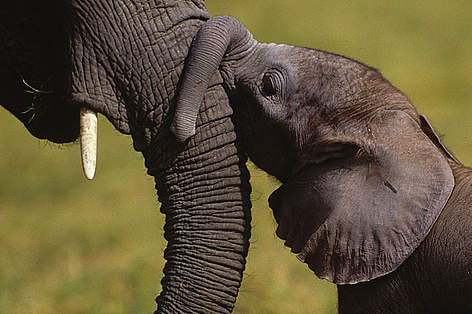 African savanna elephant and calf
(Loxodonta africana africana), Amboseli National Park, Kenya
Photo © Martin Harvey, World Wildlife Fund
^http://wwf.panda.org/about_our_earth/species/species_pictures/moms/
African savanna elephant and calf
(Loxodonta africana africana), Amboseli National Park, Kenya
Photo © Martin Harvey, World Wildlife Fund
^http://wwf.panda.org/about_our_earth/species/species_pictures/moms/
.
[Ed: No! Wildlife have existence rights just a humans. Mammalian Wildlife are sentient beings just as humans – Read: >The Cambridge Declaration on Consciousness 2012 (2 pages,PDF, 27 kb).
Unlike humans, poached wildlife such as Elephants, Rhinoceroses, Bears and Tigers are increasingly approaching extinction as species. Genocide of humans falls short of speciescide, which should be put in perspective.
.
Wildlife Parts need to be valued as Human Parts. The Wildlife Parts Trade need to internationally attract the equivalent penalties as does the Human Parts Black Market by: (1) those who commit the barbaric slaughter, (2) by those traffic in wildlife parts, and (3) by those who use wildlife parts. Penalties need to be Life Imprisonment accordingly, and for corporations fines of up to US$1 million per animal and all corporate assets seized and the corporation wound up].
 Poor Victim of Organ Gangs
[Source: ^Bloomberg, 20111101]
Poor Victim of Organ Gangs
[Source: ^Bloomberg, 20111101]
.
Jan 2013: ‘Poachers busted with 779 Elephant Tusks’
[Source: ‘Poachers Busted With Almost 800 Elephant Tusks’, by Andri Antoniades, TakePart (a social action website), 20130106, ^http://www.takepart.com/article/2013/01/06/blood-ivory-market-surges-activists-scramble-protect-elephants].
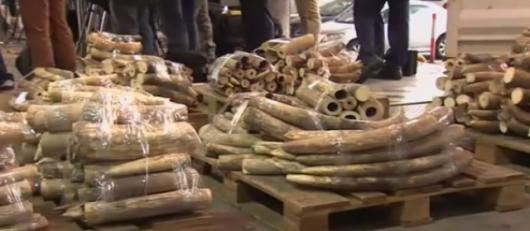 779 elephant tusks uncovered in Hong Kong shipping containers in January 2013 (just 3 days ago)
The crime is escalating!
The tusks discovered in Hong Kong this week were presumably going to be turned into jewelry, knicknacks, and religious icons.
(Photo: SkyNews.com/YouTube Screengrab)
779 elephant tusks uncovered in Hong Kong shipping containers in January 2013 (just 3 days ago)
The crime is escalating!
The tusks discovered in Hong Kong this week were presumably going to be turned into jewelry, knicknacks, and religious icons.
(Photo: SkyNews.com/YouTube Screengrab)
.
<<Last month, TakePart reported on some revolutionary new tactics that will be implemented in order to hinder the proliferation of the very lucrative poaching industry. Those efforts can’t come fast enough; this week, another massive shipment of blood ivory was discovered in Hong Kong, the shipping port’s third discovery of illegal ivory in as many months.
According to Sky News, this week customs agents discovered 779 elephant tusks hidden in the false bottoms of shipping crates, marked as “archaeological stones”. Worth about $1.5 million, this massive shipment from Kenya represents at least 389 elephant deaths, but doesn’t even qualify as the largest the port has seen in recent months.
Two previous shipments recently discovered were actually substantially larger, with the biggest topping out at 4 tonnes of elephant tusks, worth about $3.4 million. That was just in November.
Hong Kong’s port is a popular through-way for the poaching trade because it serves as the hub for Asian markets, where the demand for ivory is at the world’s highest. The tusks are not only used to make jewelry, but trinkets and religious icons for the Chinese, Japanese and Thai markets.
The poaching industry has recently exceeded record levels with animals like Elephants, Tigers and Rhinos being slaughtered by the hundreds across continents. The kill-methods represent a level of cruelty that’s so barbaric it seems the stuff of fictional villains. Nonetheless, knowledge of the industry’s brutality does nothing to dampen sales.
Activists estimate about $10 billion a year is made from poaching’s international black market.
According to National Geographic, these recently uncovered shipments of elephant tusks just scratch the surface of the damage caused by poaching in the last 12 months.
.
In 2012, 633 Rhinos were killed in South Africa (448 in 2011), their horns hacked off while they were still alive.
.
“Hundreds of thousands” of African Grey Parrots were shipped off for sale. Less than 300 Sumatran Rhinos are left and only four Northern White Rhinos remain in captivity.
Every year, approximately 25,000 Elephants are killed for their tusks, accounting for their disappearance from the African and Asian plains.
The magazine reports that China’s recent stronghold in Africa is fueling a resurgence in the poaching industry. The country’s presence there, where it funds roads, dams, and municipal
buildings makes it a major player on the continent, giving it the power and access to easily extract the illegal goods and ship them home.
As activist Steve Boyes wrote in his National Geographic piece on the subject,
.
“We are standing on the precipice of a mass extinction and Africa is just about to be lost forever.”
.
In the meantime, the World Wildlife Fund, in partnership with Google, is trying launch the wide-scale implementation of drone technology, which will covertly monitor poachers’ activity
from hundreds of feet in the air. The secret system would alert ground crews of oncoming danger and send them in to areas where poachers are detected. Part of the initiative also
includes research into DNA tracing capabilities, allowing authorities to definitively trace poached animal parts.>>
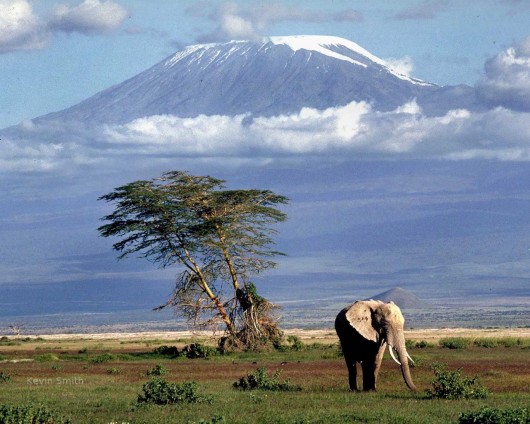 Plains below Kilimanjaro
(Source: Photo © Keven Smith,^http://www.naturepicoftheday.com/archive/2009-02-03)
(Click image to enlarge)
Plains below Kilimanjaro
(Source: Photo © Keven Smith,^http://www.naturepicoftheday.com/archive/2009-02-03)
(Click image to enlarge)
.
Sep 2011: ‘794 Elephant Tusks Intercepted’
[Source: ‘794 elephant tusks intercepted’, 20110906, ^http://gbtimes.com/news/794-elephant-tusks-intercepted].
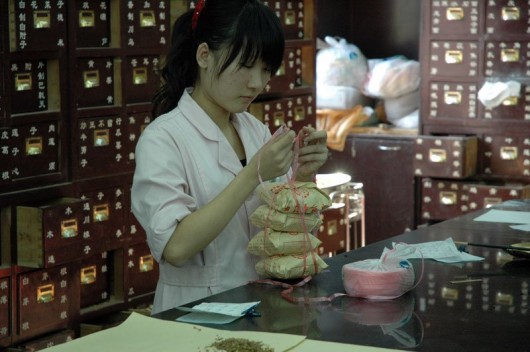 TCM Witchdoctoring in Wildlife Parts
TCM Witchdoctoring in Wildlife Parts
.
<<Hong Kong officials intercepted 794 elephant tusks bound for mainland China from Malaysia.
The seizure comes in the wake of two other large shipments of African ivory being intercepted at the end of August by Malaysian officials.
Wildlife conservationalists have been struggling with the supply of ivory from illegal poachers in Africa paired with the demand in China. Ivory is often used for ornaments or for medicinal purposes, particularly in mainland China.
According to the International Centre for Trade and Sustainable Development, Malaysia is becoming a first choice as a transit country for the trade of African ivory to China.
Although being lauded for the August discovery of illegal ivory shipments, critics wonder why Malaysian officials were not able to stop this two metric tonne shipment.>>
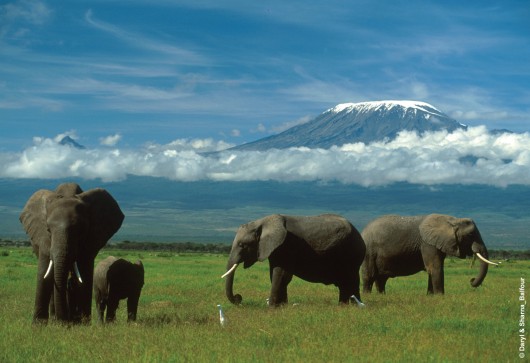 Africa’s Kilimanjaro and its native Elephants
(Source: Photo © Daryland and Sharna Balfour, ^http://www.awf.org/blog/wp-content/uploads/2011/01/Elephant-DarylandSharna_Balfour.jpg)
(Click image to enlarge)
Africa’s Kilimanjaro and its native Elephants
(Source: Photo © Daryland and Sharna Balfour, ^http://www.awf.org/blog/wp-content/uploads/2011/01/Elephant-DarylandSharna_Balfour.jpg)
(Click image to enlarge)
.
Dec 2012: Rhino Horns increasingly targeted by TCM Poachers
[Source: ‘Coveting Horns, Ruthless Smugglers’ Rings Put Rhinos in the Cross Hairs’, by Jeffrey Gettleman and Gaia Pianigiani (New York Times), 20121231, ^http://www.nytimes.com/2013/01/01/world/africa/ruthless-smuggling-rings-put-rhinos-in-the-cross-hairs.html?pagewanted=all&_r=0].
<<KRUGER NATIONAL PARK, South Africa — They definitely did not look like ordinary big-game hunters, the stream of slender young Thai women who showed up on the veld wearing tight bluejeans and sneakers.
But the rhinoceros carcasses kept piling up around them, and it was only after dozens of these hulking, relatively rare animals were dead and their precious horns sawed off that an extravagant scheme came to light.
The Thai women, it ends up, were not hunters at all. Many never even squeezed off a shot. Instead, they were prostitutes hired by a criminal syndicate based 6,000 miles away in Laos to exploit loopholes in big-game hunting rules and get its hands on as many rhino horns as possible — horns that are now worth more than gold.
“These girls had no idea what they were doing,” said Paul O’Sullivan, a private investigator in Johannesburg who helped crack the case. “They thought they were going on safari.”
The rhino horn rush has gotten so out of control that it has exploded into a worldwide criminal enterprise, drawing in a surreal cast of characters — not just Thai prostitutes, but also Irish gangsters, Vietnamese diplomats, Chinese scientists, veterinarians, copter pilots, antiques dealers and recently an American rodeo star looking for a quick buck who used Facebook to find some horns.
Driven by a common belief in Asia that ground-up rhino horns can cure cancer and other ills, the trade has also been embraced by criminal syndicates that normally traffic drugs and guns, but have branched into the underground animal parts business because it is seen as “low risk, high profit,” American officials say.
“Get caught smuggling a kilo of cocaine, you will receive a very significant prison sentence,” said Ed Grace, a deputy chief with the United States Fish and Wildlife Service. But with a kilogram of rhino horn, he added, “you may only get a fine.”
The typical rhino horn is about two feet long and 10 pounds, much of it formed from the same substance as fingernails. Yet it can fetch nearly $30,000 a pound, more than crack cocaine, and conservationists worry that this “ridiculous price,” as one wildlife manager put it, could drive rhinos into extinction.
Gangs are so desperate for new sources of horn that criminals have even smashed into dozens of glass museum cases all across Europe to snatch them from exhibits.
“Astonishment and rage, that’s what we felt,” said Paolo Agnelli, a manager at the Florence Museum of Natural History, after three rhino horns were stolen last year, including a very rare one from 1824.
American federal agents recently staged a cross-country undercover rhino horn sting operation, called Operation Crash, “crash” being the term for a herd of rhinos.
Among the 12 people arrested: Wade Steffen, a champion steer wrestler from Texas, who pleaded guilty in May to trafficking dozens of horns that he found through hunters, estate sales and Facebook; and two members of an Irish gang — the same gang suspected of breaking into the museums in Europe.
In an e-mail to an undercover agent, an Irish gangster bragged: “Believe me WE NEVER LOSES A HORN TO CUSTOMS, we have so many contacts and people payed off now we can bring anything we want out of nearly any country into Europe.”
Corruption is a huge element, just like in the illegal ivory trade, in which rebel groups, government armies and threadbare hunters have been wiping out tens of thousands of elephants throughout Africa, selling the tusks to sophisticated criminal networks that move them across the globe with the help of corrupt officials.
Here in South Africa, home to the majority of the world’s last surviving 28,000 rhinos or so, the country is throwing just about everything it has to stop the slaughter — thousands of rangers, the national army, a new spy plane, even drones — but it is losing.
The number of rhinos poached in South Africa has soared in the past five years, from 13 killed in 2007 to more than 630 in 2012. The prehistoric, battleship-gray animals are often found on their knees, bleeding to death from a gaping stump on their face.
“Ever seen a dead rhino?” asked Philip Jonker, who works for a private security firm that has gone into wildlife protection. “It’s worse than going to a funeral.”
The only answer, some contend, is to legalize the trade, which would flood the market with rhino horns, lower the price and dissuade rhino poachers from risking their lives — or so the argument goes. Rhino horns regenerate, and the horns can be shaved down every few years and sold off without significantly hurting the animal.
One of most passionate advocates of this legalization movement is John Hume, a South African entrepreneur who now owns more than 800 rhinos, with names like Curly, Titan, Hillary and Pinocchio, and has amassed a 2,000-pound mountain of horn worth millions of dollars — if he is ever allowed to sell it.
“Why shouldn’t the person who breeds rhino get a reward?” he asks.
Every time Mr. Hume’s ranch hands trim down a few rhinos, they organize an armed escort to take the horns straight to a safe-deposit box in a bank because the same gangs that waylay armored bank trucks are now cruising around South Africa looking for Rhino horns.
But many wildlife groups say legalizing the rhino trade would be a disaster.
“The consuming power in my country is growing so rapidly that the supply would never meet the needs,” said Jeff He, spokesman for the Chinese branch of the International Fund for Animal Welfare. “And besides, it’ll always be cheaper to poach an animal than raise it.”
Kruger National Park, an enormous wildlife refuge in South Africa’s northeast, is where many rhinos are being poached. The park lies on the border with Mozambique, a much poorer country still scarred from years of civil war. Park rangers say Mozambican gunmen are pouring through Kruger’s chain link fences, downing rhinos left and right.
Some sophisticated poaching rings use helicopters to spot the animals and veterinarians to dart them with tranquilizers. Others don women’s shoes, to leave misleading tracks. “At any one time, there are up to 10 groups operating inside the Kruger,” said Ken Maggs, a South African National Parks official. “These guys are trying new methods daily.”
Scientists say that maybe a million rhinos once roamed the earth, and for some reason, humans have been fascinated with the horn for ages. The ancient Persians thought rhino horn vessels could detect poisons. The Chinese thought rhino horn powder could reduce fevers. The Yemenis prized the horn for coming-of-age daggers, presented to teenage boys as a sign of manhood.
In Asia, faith in traditional cures runs strong, fueling demand as Asian economies grow, though there is no scientific proof that rhino horn can cure cancer.
In 2008, a Vietnamese diplomat in South Africa’s capital, Pretoria, was caught on camera receiving Rhino horn — in the parking lot of the embassy. Around the same time, a Chinese company opened a secretive rhino breeding center in Hainan Province, reportedly to produce rhino-based medicine.
In the past 50 years, the overall rhino population has plummeted by more than 90 percent, despite an international ban on the trade in rhino parts since 1977.
But in South Africa, it is legal to hunt Rhinos, creating the loophole that the Thai prostitutes sauntered through. Hunters must agree to keep the horn set (rhinos have a large front and smaller back horn) as a trophy and not sell it, and hunters are allowed to kill only one White Rhino every 12 months. (Black rhinos are critically endangered and very few are hunted in South Africa.)
According to South African law enforcement officials, gang leaders in Thailand and Laos decided that to maximize the number of Rhinos they could kill, they would enlist Thai prostitutes who were already in South Africa with valid passports, which were used for the hunting permits. The women then tagged along on the hunts, often dressed in catchy pinks and blues, but somebody else — usually a professional hunter — pulled the trigger.
“I don’t know whose idea it was to use the ladies, but it was a damn good one,” said Mr. O’Sullivan, the private investigator.
None of the two dozen or so prostitutes involved have been prosecuted — the intent was to get the big fish. So Mr. O’Sullivan leaked a photograph of an enormous stockpile of ivory and rhino horns to one of the women, along with a message for her boss, a bespectacled Thai man named Chumlong Lemtongthai, that everything was for sale: “I wanted the big man himself to come here and negotiate.”
Mr. Lemtongthai did exactly that, and he was arrested soon after. He pleaded guilty and was sentenced in November to 40 years.
“I do not want to see a situation where my grandchildren will only be able to see rhino in a picture,” said the judge, Prince Manyathi.>>
.
Jan 2013: Vietnamese caught smuggling Rhino Horn
[Source: ‘Rhino Horn Trade: Thai Officials Catch Smuggler In Bangkok Airport’, 20130106, Huffington Post (America), ^http://www.huffingtonpost.com/2013/01/07/illegal-rhino-horn-trade-smuggling-thailand_n_2424428.html; ^http://www.bangkokpost.com/news/local/329675/rhino-horn-seized-in-bangkok-ho-chi-minh].
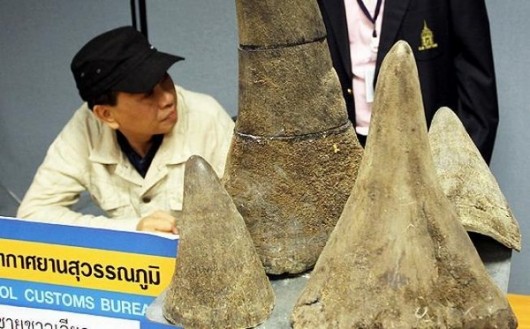 Seized rhino horns are shown with alleged Vietnam smuggler Pham Quang Loc, 56,
arrested at Suvarnabhumi airport when he arrived from Ethiopia on his way to Vietnam
Seized rhino horns are shown with alleged Vietnam smuggler Pham Quang Loc, 56,
arrested at Suvarnabhumi airport when he arrived from Ethiopia on his way to Vietnam
.
<<BANGKOK — Thai authorities have seized more than $500,000 worth of rhino horn from passenger’s luggage at a Bangkok airport.
Thai Customs officer Khanit Isdul said Sunday that officials acting on a tip-off found four rhino horns in the passenger’s luggage at Suvarnabhumi International Airport. (‘They were allegedly hidden inside a souvenir hippo carried by Mr Loc.)
Officials arrested Phan Quangloc, a 56-year-old Vietnamese passenger who arrived with the case from Ethiopia on Sunday. He is expected to face a jail term in Thailand if convicted of smuggling. Officials estimated the value of the confiscated horns, cut into 6 sections, at 18 million baht ($586,000).
Asia is the main market for smuggled rhino horn, as some people believe it can cure diseases.
Trade in rhino parts is banned under international agreements.>>
.
Nov 2011: 366 Rhinos slaughtered for TCM since January
[Source: ‘Record rhino horn haul’, 20111116, by Candice Bailey and Shaun Smillie, IOL News, (from Reuters) ^http://www.iol.co.za/news/crime-courts/record-rhino-horn-haul-1.1179722#.UOxvi3fcDNE].
 Lam Tak-fai, acting head of (Hong Kong) Ports and Maritime Command, arranges Rhino horns,
part of a shipment of 33 horns, ivory chopsticks and bracelets seized by the Hong Kong Customs and Excise Department,
during a news conference in Hong Kong.
Lam Tak-fai, acting head of (Hong Kong) Ports and Maritime Command, arranges Rhino horns,
part of a shipment of 33 horns, ivory chopsticks and bracelets seized by the Hong Kong Customs and Excise Department,
during a news conference in Hong Kong.
.
<<It could just be a new method used by syndicates to smuggle Rhino horn out of the country: bulk consignments, hidden in containers and sent by sea. But Rhino syndicates are not just using new smuggling routes, poachers also appear to be changing their tactics to target more animals.
On Monday, customs officials in Hong Kong discovered 33 Rhino horns that had been hidden in a container on a ship that had left Cape Town. They also seized 758 ivory chopsticks and 127 ivory bracelets, which they estimated was worth HK$ 17.4 million (R18.17m).
Customs officers had apparently selected the container “acting on risk assessment”. It was marked as carrying 63 packages of scrap plastic. Using X-ray equipment, they found the contraband hidden inside a package of plastic scrap that had been placed at the rear of the container. The 33 horns, which weighed 86kg, constitute nearly a tenth of the Rhinos poached in SA this year.
Dr Richard Thomas, the communications co-ordinator for Traffic International, said such a large seizure of Rhino horns was unusual. “Usually there are reports of one or two horns being smuggled out through the airports, I can’t think of such a shipment before,” he said.
Thomas said the Cape Town to Hong Kong sea route was usually used by perlemoen smugglers, and that Rhino horn syndicates might be using the same network.
What he suspected was that from Hong Kong the horn might be smuggled overland through China on to Vietnam, with its large market for rhino horn. There is also an active ivory-smuggling route between the two Far East countries. Two weeks ago, Vietnamese authorities seized a ton of ivory that had come from China.
South African Revenue Service spokesman Adrian Lackay said they had received news of the confiscation and had been in touch with the Hong Kong authorities.
“We will assist the foreign agencies with a local investigation if needed, because the goods came from South Africa,” he said.
Since January, 366 Rhinos have been killed across the country. Of those, the majority of the killings have been in the Kruger National Park, where 209 Rhinos were slain.
To date, 199 poachers have been arrested since January – compared to 165 arrested for last year. Thai nationals Chumlong Lemtongthai and Punpitak Chunchom are currently in court for exporting Rhino horn.
Lemtongthai, the syndicate’s alleged kingpin, used Thai prostitutes and strippers as bogus Rhino hunters. He would allegedly obtain legal trophy permits to shoot the Rhinos.
SANParks CEO Dr David Mabunda said that despite the higher number of Rhino killings this year, the number of incidents was declining. The reason was a change in modus operandi by the poachers. They were still using AK-47s and other heavy-calibre weapons and hacking off the horns. But poachers were attacking in larger groups than before, sometimes up to 16 armed members. Mabunda said the source of the Rhino horn in the container came from several parks: private and state owned. The bust showed the urgency for the DNA profiling of the Rhino, currently being done by the University of Pretoria.
It would tell where the Rhino had been killed, and once a horn could be linked to a carcass, a poacher could be charged with killing an endangered species. Killing an endangered species carries a heavier sentence than possession of Rhino horn.
Mabunda said they continued to work with the police and the SA National Defence Force, and at any time, there were between eight and 10 anti-poaching groups operating in the Kruger National Park.
The strengthening of the park’s law enforcement meant that crime was being displaced to other parts of the country. The hardest hit areas were Limpopo, Mpumalanga and rural areas of KwaZulu-Natal.>>
.
Jan 2013: 633 Rhinos slaughtered in 2012, just in South Africa
[Source: ‘Report will advise on legal trade in rhino horn’, 20130108, by Sue Blaine, Business Day, National/Science & Environment (South Africa), ^http://www.bdlive.co.za/national/science/2013/01/08/report-will-advise-on-legal-trade-in-rhino-horn].
<<FORMER home affairs director-general Mavuso Msimang, who has been set the task of researching ways of saving the rhino from poaching, is expected to report in the first quarter of this year. His report will also advise on whether South Africa should apply to trade in rhino horn under the Convention on International Trade in Endangered Species of Wild Flora and Fauna (CITES).
The trade issue has polarised many South Africans who have the rhino’s best interests at heart. Water and Environmental Affairs Minister Edna Molewa will have the unenviable task of deciding whether South Africa should apply to trade in rhino horn.
Although South Africa will not be making any proposal on trade until 2016’s Cites meeting, there will be discussion on Kenya’s recent proposal to the international body that a trophy-hunting moratorium be placed on South African white rhinos, says Southern African Development Community rhino management group chairman Mike Knight.
The proposal will be considered at the Cites Conference of Parties in Bangkok in March. If approved, the moratorium will be instituted until 2019, says Lion Aid founder Pieter Kat.
Mr Kat says Kenya argues that despite progress made by South Africa in instituting more demanding control measures, rhino poaching continues to rise.
Controls include the development of an electronic database for licence applications, mandatory registration of existing rhino horn stockpiles, bilateral treaties to improve law enforcement, increasing penalties and improving the gathering of intelligence.
“Kenya is of the opinion that such poaching has resonated across borders and that the recent upsurge in rhinos poached in Kenya is directly linked to a problem made in South Africa,” Mr Kat says.
Mr Knight says that integral to the Kenyan proposal is that countries such as South Africa and Zimbabwe, and countries where rhino horn is sought after such as China and Vietnam, should respond to its proposal.
It is agreed that South Africa is not winning the war on rhino poaching. The country lost a record 633 rhinos between January 1 and December 19 last year. The previous record, for 2011, was 448. Already two rhinos have been slain in the first week of 2013.
Arrests have increased and sentences for the convicted are harsher. South Africa also signed a long-awaited memorandum of understanding with Vietnam in mid-December. The agreement aims to curb rhino poaching.
South Africa is home to more than 80% of the global population, and scientists have warned that if poaching increases at the same rate as it did between 2009 and 2011, when the tally jumped from 122 to 448, just more than a threefold increase, the species will be extinct by mid-century. It could go into decline by 2016.
Conservationists see Vietnam as key to curbing the poaching that feeds the illegal horn trade. The country, a known destination for much of the illegal rhino horn poached in South Africa, posted the highest wildlife crime score in the World Wide Fund (WWF) for Nature’s 2012 Wildlife Crime Scorecard report.
Rhino horn, prized in Vietnam as a “pick-me-up”, cancer cure and even an aphrodisiac, fetches about $60,000/kg in the Southeast Asian country.
The agreement that Ms Molewa and Vietnamese Agriculture and Rural Development Minister Cao Duc Phat signed last month refers only in general terms to addressing illegal wildlife smuggling.
However, there were “clear indications” that rhino horn trafficking would be “top of the new agenda on co-operation between the two nations”, WWF-SA said immediately after the memorandum was signed.
Mr Knight says it is likely South Africa will turn more to technology to help it fight rhino poachers, with the possible use of “unmanned aerial vehicles”, or “drones”.>>
.
Rhino Conservation
[Source: ‘Rhino Conservation’, World Wildlife Fund (South Africa), ^http://www.wwf.org.za/act_now/rhino_conservation/].
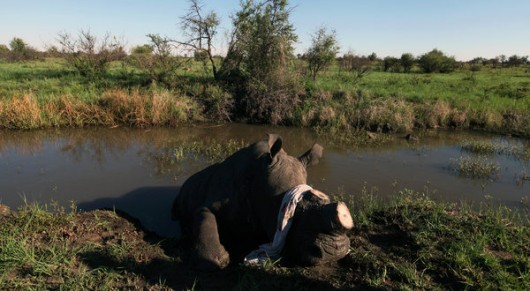 Rhinoceros de-horned to save it from TCM poaching
Rhinoceros de-horned to save it from TCM poaching
.
WWF urges South Africans to be proud of their Rhino heritage on World Rhino Day (22 September).
More than 75% of all the world’s Rhino today are found in South Africa.
Rhinos have ranged far and wide across Africa and formed a magnificent part of our cultural and natural heritage for thousands of years. Long before becoming part of the iconic Big Five, rhinos were revered by African royalty as epitomised by the Golden Rhino buried with the King of Mapungubwe 800 years ago. South Africans are rightly proud of their rhino history and the critical role they played in the remarkable recovery of white rhino numbers over the last century. Today three out of every four rhinos alive are found in this one country.
.
Yet, rhino deaths from poaching continue to rise. As of 16 October 2012, 455 rhinos have been illegally killed for their horns this year.
.
Rhino numbers continue to grow as more are born than are dying – even when poaching mortalities are taken into account. However, we are coming ever closer to the danger zone where populations start to decline. WWF urges all South Africans to play a part in rhino protection at this pivotal point in their future. Report threats to rhinos or any signs of suspicious behaviour on the Department of Environmental Affairs Rhino Hotline.
.
What does WWF do to help rhinos?
.
On Rhino Day 2012, WWF-SA launched its new National programme to strengthen and support rhino conservation efforts in South Africa in response to the dramatic increase in cases of rhino poaching. Conservation activities will be based around a new five-point strategic framework to combat the threats to rhinos.
The five key areas are:
- Continuing the protection of key rhino populations and creating new resilient populations in South Africa through our Black Rhino Range Expansion Project (BRREP)
- Developing buffers in local communities around rhinos as the first critical line of defence
- Supporting and tightening proactive law enforcement efforts to break illegal trade chains
- Improving co-operation between South Africa and consumer countries
- Understanding rhino horn trade in end-user markets and influencing demand
We are working with our colleagues in Vietnam to develop tactics to shift new markets and new uses leading to increased demand for rhino horn.
During the first week of October, BRREP translocated a further thirteen black rhino from Ezemvelo KZN Wildlife reserves to another property in northern KwaZulu-Natal.>>
 Black Rhino
(Photo byJeff McNeely)
Black Rhino
(Photo byJeff McNeely)
.
“10 percent of any population is cruel, no matter what, and 10 percent is merciful, no matter what, and the remaining 80 percent can be moved in either direction.”
~ Susan Sontag (1933-2004)
.
Further Reading:
.
[1] World Rhino Day, 22 September , ^http://www.worldrhinoday.org/
.
[2] Convention on International Trade in Endangered Species of Wild Fauna and Flora, ^http://www.cites.org/
.
[3] TRAFFIC: The Wildlife Trade Monitoring Network, World Wildlife Fund, ^http://worldwildlife.org/initiatives/traffic-the-wildlife-trade-monitoring-network
.
[4] TRAFFIC: The Wildlife Trade Monitoring Network, ^http://www.traffic.org/
.
[5] SOS Elephants, ^http://www.soselephants.org/
.
[6] Cambridge Declaration On Consciousness, Francis Crick Memorial Conference, (Cambridge, England, 20120707, ^http://fcmconference.org/img/CambridgeDeclarationOnConsciousness.pdf
.
[7] African Wildlife Foundation, ^http://www.awf.org/
.
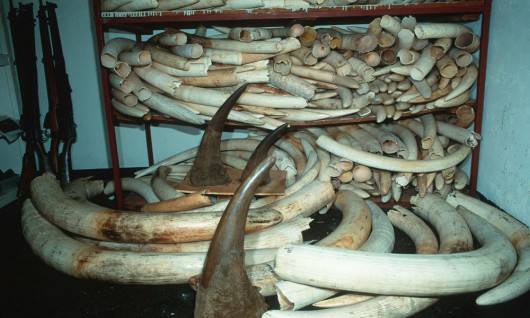 <<Illegal and/or unsustainable wildlife trade can cause a species to reach a point where its survival hangs in the balance. In fact, illegal wildlife trade is one of the main reasons that many species are endangered.
<<Illegal and/or unsustainable wildlife trade can cause a species to reach a point where its survival hangs in the balance. In fact, illegal wildlife trade is one of the main reasons that many species are endangered.
For example, Rhino poaching to fuel to demand for the illegal Rhino horn trade reached an all-time high in 2011, with 448 Rhinos poached in South Africa alone. This could unravel years of conservation success with African Rhinos.>>
[Source: World Wildlife Fund, ^http://worldwildlife.org/initiatives/traffic-the-wildlife-trade-monitoring-network]